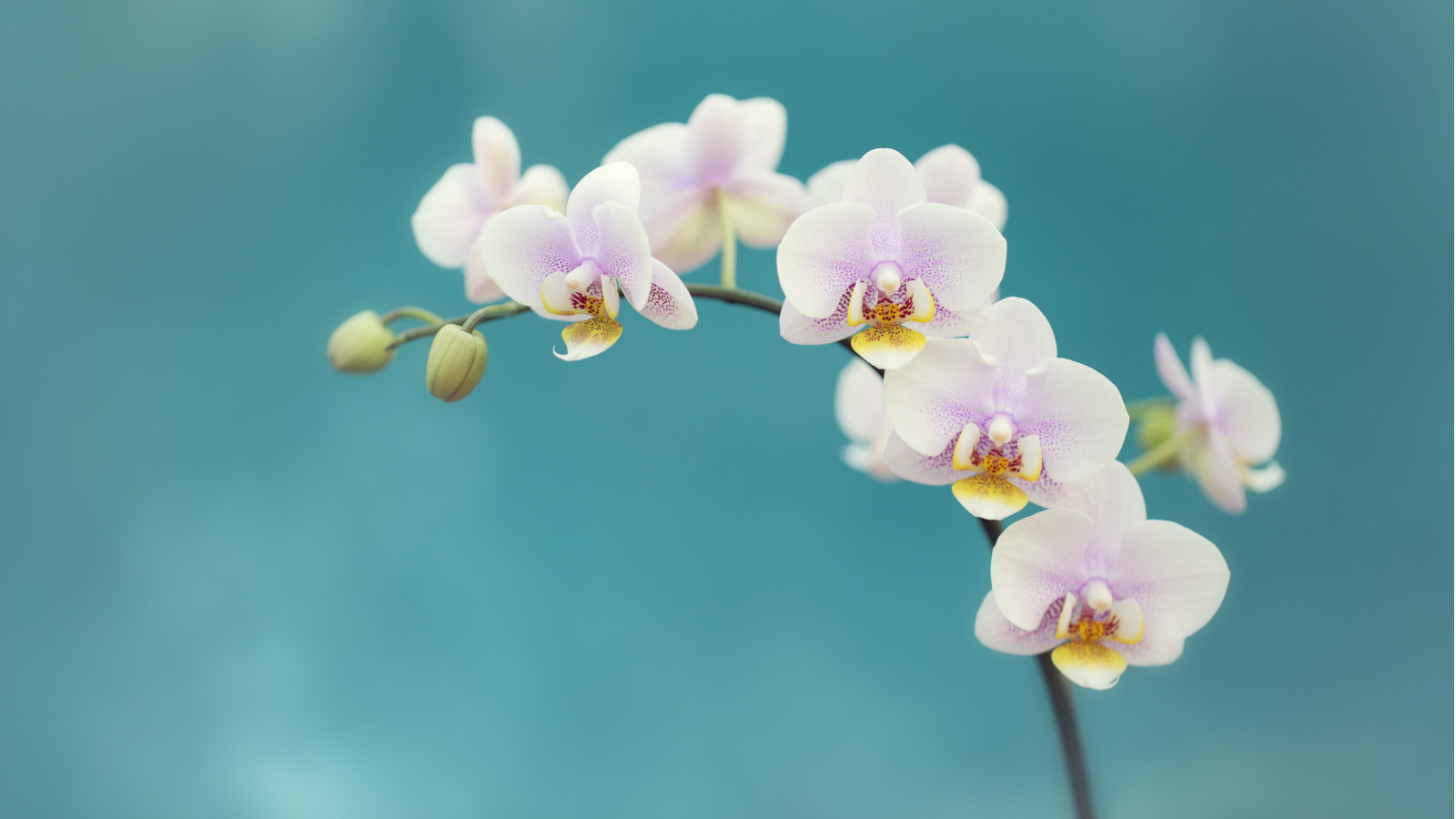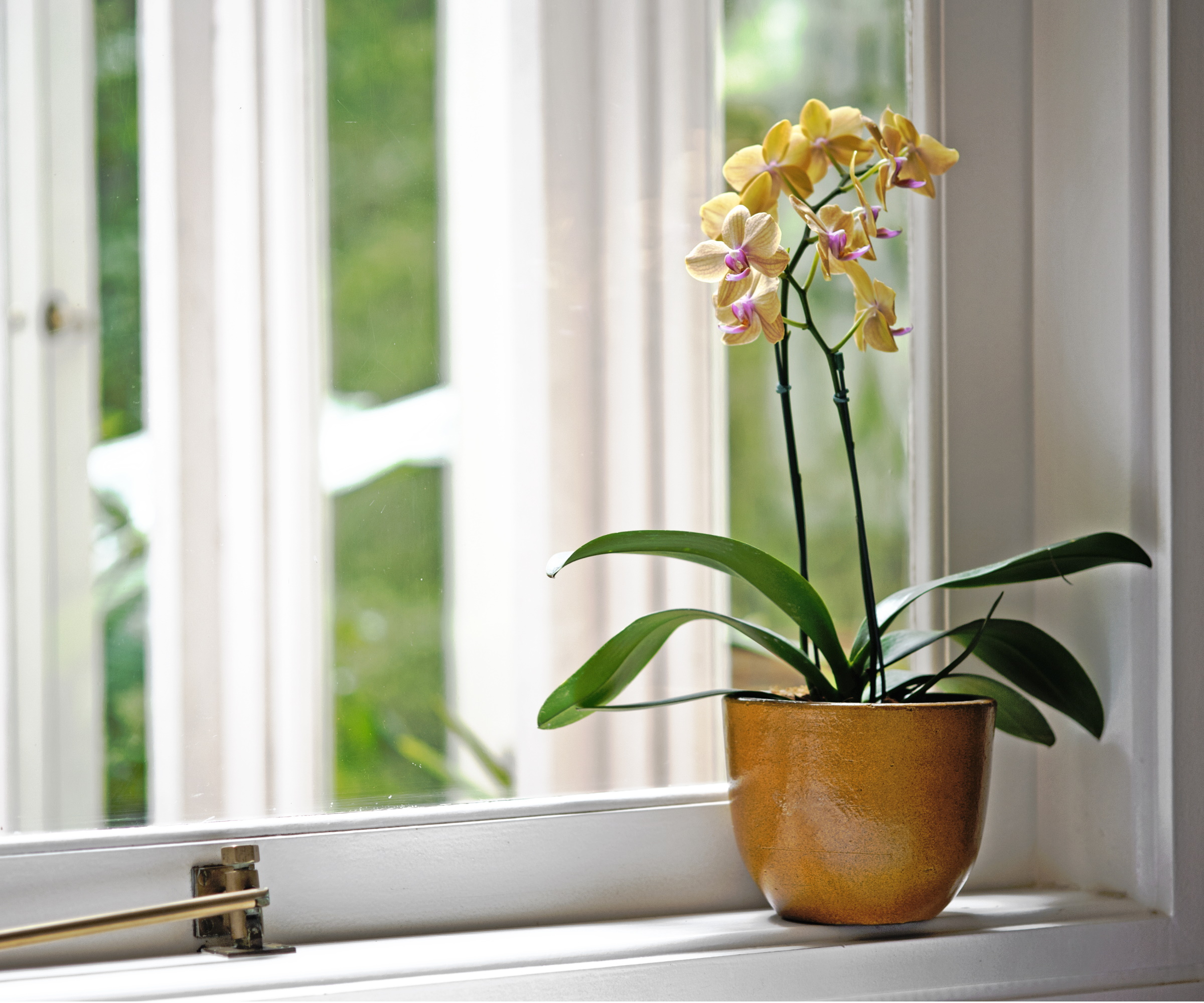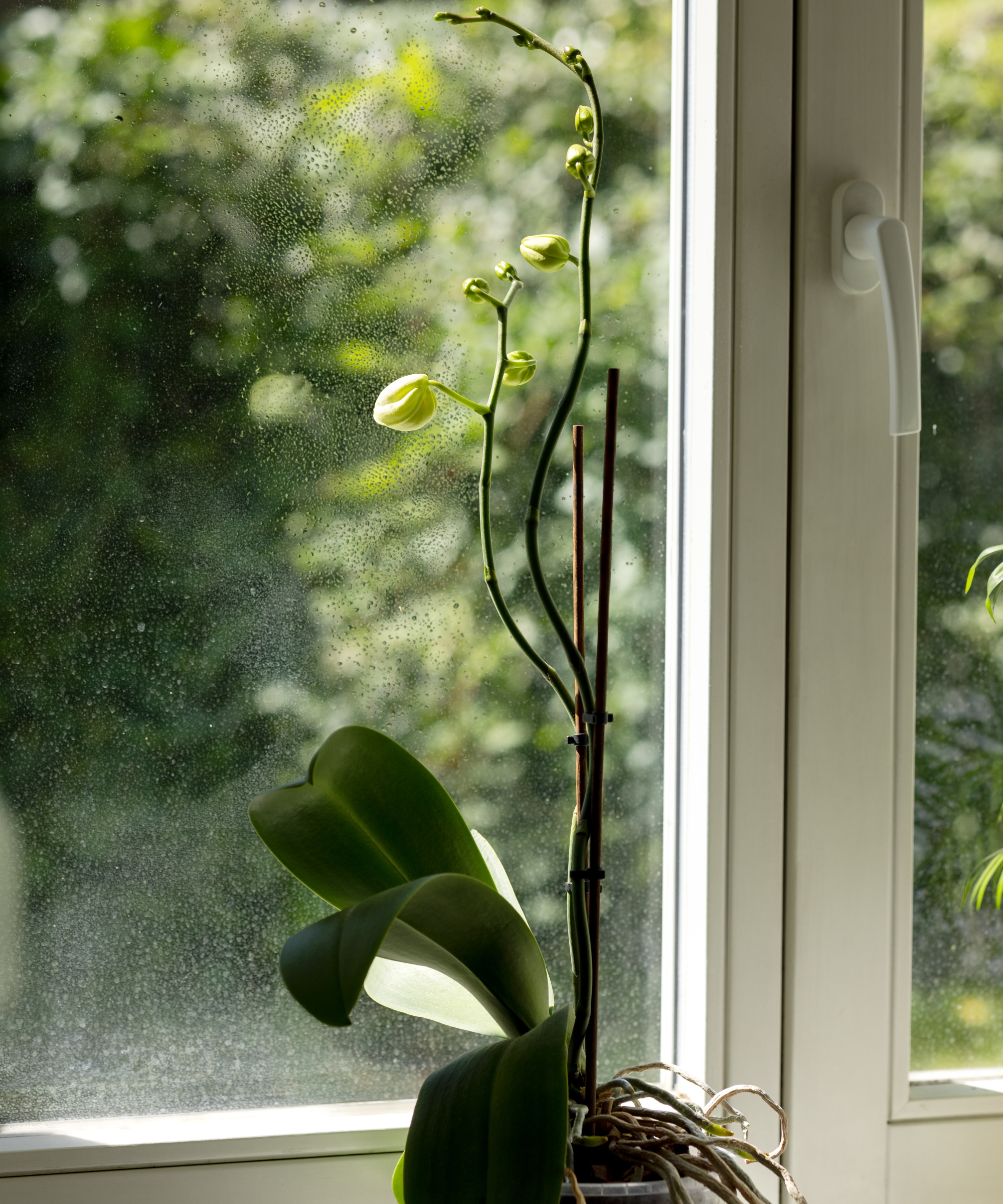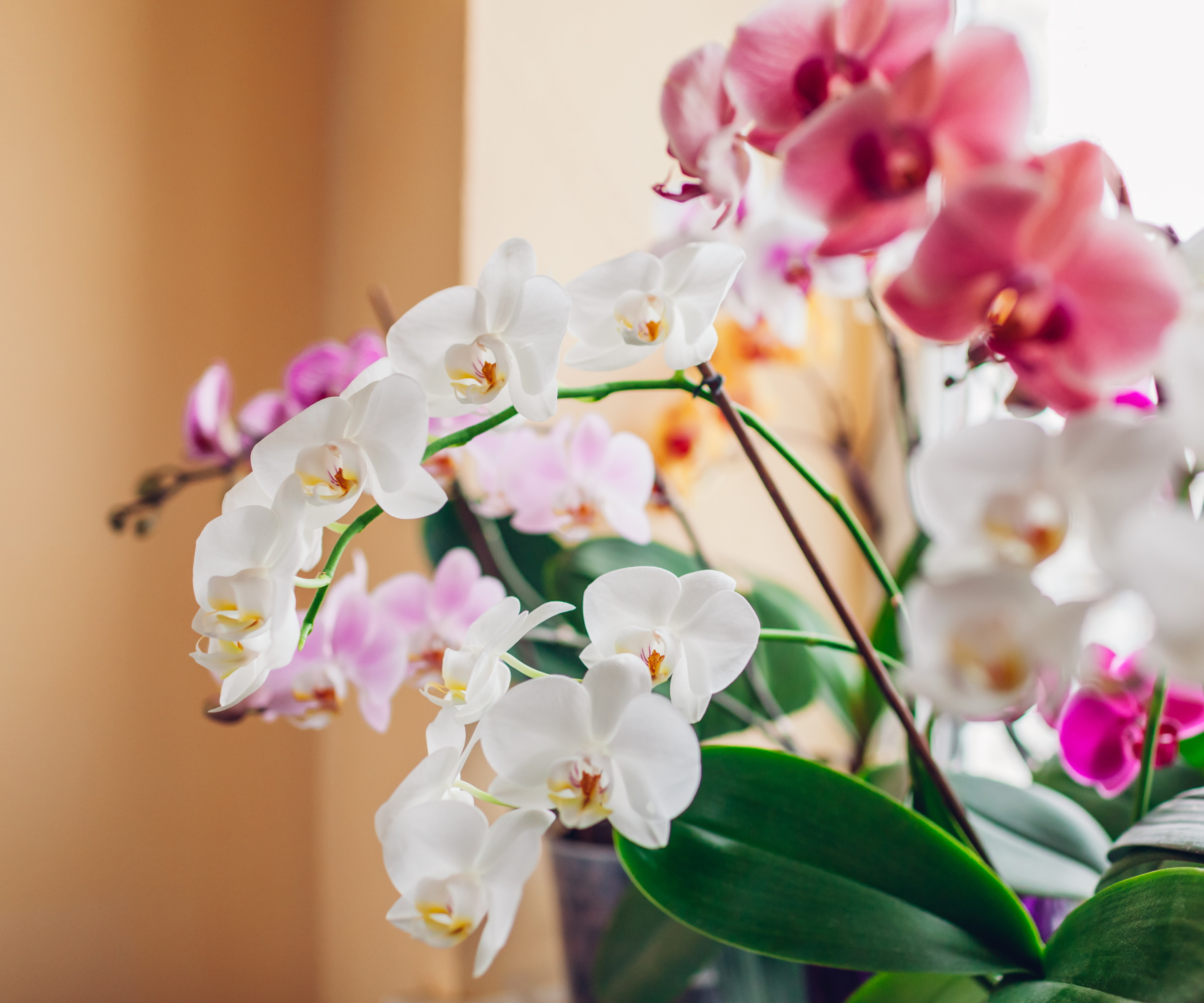I brought my orchid back to life after two years – here's why you shouldn't give up on getting orchids to rebloom
If your orchid isn't blooming, hold out hope - there are a few things you can do to encourage it


Every houseplant lover knows that orchids are not the easiest indoor plants to care for. They require some extra attention to keep them happy and will be quick to tell you if something is wrong by wilting, dropping their flowers, or turning yellow.
I've always loved orchids for their delicate exotic blooms and have owned multiple over the last few years. They brighten up my windowsills and always catch the eye of my visitors. But there's one recurring problem I've experienced - not being able to keep my orchids blooming for long or getting them to rebloom.
I tried moving them to different parts of my home to see if I could find happier, brighter spots and yet the gorgeous display of flowers would only last for a couple of months before falling off, the stems and roots dying shortly after.
That was until my white moth orchid, or Phalaenopsis amabilis, started to show signs of growth again after two years of not blooming.
I was nearly ready to give up, until I noticed my orchid still had healthy roots, despite such a long time without growing new stems or flower buds. So, I gave it some essential care and was finally rewarded with new flowers that made the long wait worth it.
Here's what I learned about giving orchids a second lease of life.

What causes an orchid to stop blooming?
It's normal for orchids to have dormant periods where they don't bloom. The flowers will have their cycle before wilting away. Usually, orchids bloom for up to ten weeks but this can be prolonged if you give it the right care and provide optimal conditions.
'In our experience, orchids stay dormant or resting around six to nine months. Longer dormancy is possible, but you have to check the plant. It could be malnourished or dead,' says Carmela de Castro, owner of Orchid Republic Floral Boutique.
'If it’s longer than nine or ten months then it may be a sign of underlying issues, like diseases,' says Virginia Hayes, indoor plant expert at Westerlay Orchids. 'Checking its roots for life would be your best bet before tossing it out,' she adds.
And that's exactly what I did when I realised my moth orchid had surpassed the average rest period. I took note that the roots were still looking green and firm, rather than discolored and mushy, indicating that the plant was still healthy despite a lack of growth.
Incorrect care can also lead to an orchid not blooming or even dying such as overwatering, not enough light, being cold or not having enough humidity.
'Your orchid will go through a dormant phase after a few months of blooming. Give it attention and time while it rests for the next blooming cycle,' says Virginia.


Carmela is the owner of Orchid Republic Floral Boutique, a luxury florist with boutiques in Sherman Oak and Santa Monica, California. She specialises in bespoke flower arrangements, orchids and succulents.

Virginia Hayes' floral background started in 1999 importing and exporting floral products from offices worldwide. Holding over 24 years of experience, Virginia is widely respected in the floral industry for both her design skills and business knowledge. With interior plant design at her fingertips, Virginia’ eye for floral arrangements and keeping them thriving is always top priority.
How to make a dormant orchid bloom again
Giving my dormant orchid optimal care even while it didn't look pretty led to it eventually reblooming after two years. Here's how I did it.

The first thing to do is to make sure it has the best conditions for regrowth.
Orchids have aerial roots that like to grow beyond the container. I repotted my orchid to ensure it was in a bigger home that would prevent it becoming pot-bound. I also chose to situate it in a bright, south-facing windowsill where it would gain sufficient light without being scorched by direct sunlight.
'Since orchids are tropical plants, they need proper drainage and they don't do well with saturated roots,' says Virginia.
I managed to keep my orchid at a good moisture level by ensuring it had well-draining potting mix, like this organic orchid potting mix from Perfect Plants nursery, and only watering it sparingly.
'I recommend minimal watering if it’s not actively growing. Keeping the roots slightly moist is key. Make sure you do a bark check prior to watering as you don’t want root rot,' Virginia adds. 'Depending on the season, you’ll have to water your orchid every two weeks if it's dormant.'

It can also be a good idea to remove any decaying parts of the orchid to give the healthier parts a better chance for further growth. You can do this by using clean pruning tools, such as these pruning scissors from Greendigs.
'Separate the decaying orchid parts from those still showing signs of hope. Cut the flower spike from the base so all nutrients can concentrate there,' Carmela suggests. 'Do not reuse old potting material.'
It was a case of persevering with this essential care and lots of patience before I saw two hopeful green, slender stems start to appear from the base of my orchid. Buds soon followed and my orchid once again showed off its exotic blooms.
Aftercare for revived orchids

After successfully reviving an orchid, it's key to give it some aftercare to keep your plant healthy.
'A way make sure your orchid drinks just the amount it wants and needs is by placing it in a watertight container, pour water onto the bark, and let the water fill the container to the halfway mark. Then let the orchid soak for at least 20 minutes before removing it,' says Virginia.
Orchids also love humidity, so they will thrive in a bright bathroom with lots of natural light. I have also found that regularly misting my orchid, like with this plant mister from Amazon, keeps humidity levels favorable.
Other things you can do to keep your orchid healthy include staying on top of pruning, removing any brown and mushy roots or yellowing foliage. Likewise, orchids benefit from fertilization during its active growth phase. I also use a damp cloth to clean the leaves and remove any dust it has collected.
FAQs
Is my orchid dormant or dead?
Don't be too quick to give up on your orchid when it hasn't bloomed for a long time. Orchids go through a dormant period after flowering which can last up to nine months on average. An easy way to check if your orchid is still healthy when is by assessing the roots. If they are firm and green, they are in good condition. If your orchid roots are brown and mushy, and foliage is yellowing, it's an indicator that it might be dying. Always make sure to keep on top of orchid care to keep these tricky indoor plants healthy.
How long does it take for an orchid to grow new stems?
Orchids will grow new stems as they come out of their dormant period, getting ready to bloom again. It may take a while for new stems to appear but you'll see them grow from the base of the orchid.
'It typically takes anywhere from two to eight weeks for a new stem to emerge, but it depends on the type or orchid. Be sure to follow proper orchid care steps to encourage growth,' says Virginia Hayes, indoor plant expert at Westerlay Orchids.
When your new orchid stems are long enough, you can start to support it with a stake, like these orchid stakes from Amazon, to encourage upward growth.
It took two years for my orchid to rebloom but the stunning display of exotic flowers made the wait worth it. Don't panic if your orchid is taking a long time to re-flower, you might just need to adjust its conditions and provide optimal care to encourage regrowth. Other houseplants may also look worse for wear from factors such as cold, but it is possible to revive them.
Sign up to the Homes & Gardens newsletter
Design expertise in your inbox – from inspiring decorating ideas and beautiful celebrity homes to practical gardening advice and shopping round-ups.

Tenielle is a Gardens News Writer at Homes & Gardens. She holds a qualification in MA Magazine Journalism and has over six years of journalistic experience. Before coming to Homes & Gardens, Tenielle was in the editorial department at the Royal Horticultural Society and worked on The Garden magazine. As our in-house houseplant expert, Tenielle writes on a range of solutions to houseplant problems, as well as other 'how to' guides, inspiring garden projects, and the latest gardening news. When she isn't writing, Tenielle can be found propagating her ever-growing collection of indoor plants, helping others overcome common houseplant pests and diseases, volunteering at a local gardening club, and attending gardening workshops, like a composting masterclass.
-
 Plants never to grow next to fruit trees
Plants never to grow next to fruit treesExpert advice on which plants to keep away from fruit trees to encourage a healthy harvest
By Jacky Parker Published
-
 Martha Stewart's tips for arranging daffodils are unbelievably simple and effective – it's the only flower advice you need this springtime
Martha Stewart's tips for arranging daffodils are unbelievably simple and effective – it's the only flower advice you need this springtimeMartha shows us that we can create gorgeous bouquets of this seasonal flower by simply trimming the stems and placing them in specific vases
By Hannah Ziegler Published